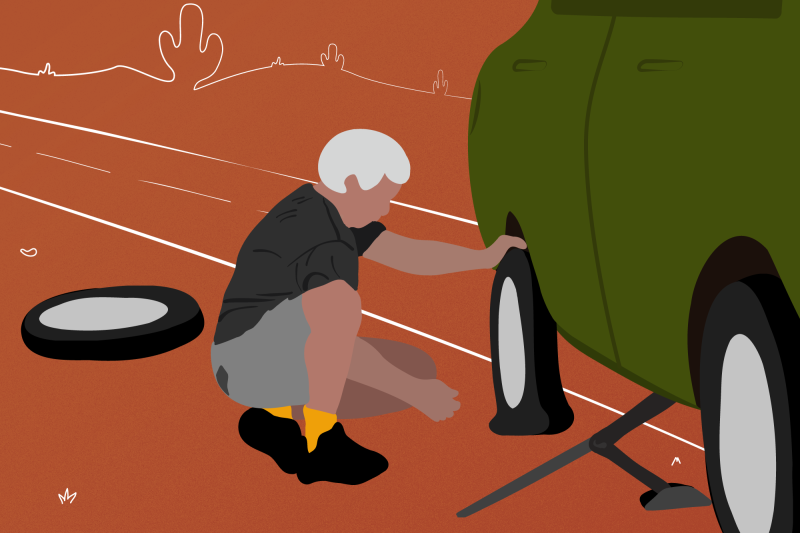
An unavoidable part of owning a car involves running into trouble like getting a flat tire. Now, you can always pay someone else to fix it, but knowing how to change a tire is a lifesaving skill if you get a flat tire in the middle of nowhere. So, if you’re casually wondering about how to change a tire and hoping for a long-winded, loquacious, even redundant introduction that winds about lazily in lyrical circles before getting to the point, then you’re going to need to look elsewhere.
First, we’ll do a quick rundown of the basic steps to changing a tire. Then we’ll cover the finer points. If you have time, read this whole article before getting to work. If not, let’s get to work!
Related Guides
Changing a Tire 101
- Get your vehicle onto stable, level ground. Even if it means driving a few more feet on the flat, this is imperative.
- Using a tire iron (should be with the car’s spare; note the potential need for a specialty attachment for one of the bolts on the tire), loosen all of the nuts (or bolts, depending on wheel type) on the flat before jacking up the vehicle.
- Place the jack under a part of the vehicle specified as safe in the manual — place it wrong, and you may damage the car, or you may damage yourself as the car falls on you.
- Jack the car up high enough that you will be able to remove the flat and also get the replacement tire on.
- Remove the nuts completely, then pull off the tire.
- Put on the spare (or full replacement) and partially tighten the nuts.
- Jack the car back down, and now fully tighten the nuts.
Now get on your way! I mean first put the flat, jack, and tools back in the trunk, but then off you go.
Tire Changing Hacks
With a few good tools, changing a car tire need not be all that much of a chore. Any new car should have all the stuff you need included, but to make things easy on yourself, consider getting these three items, just in case:
- — This will make raising the car faster, easier, and safer.
- — This will make the lifted car more stable and minimize the chance of it falling on you.
- — This will make removing even the most stubborn nuts easier.
For nuts that are stubbornly stuck in place, you can try loosening them with something like WD-40, but if you don’t have a can of that on hand, you can also loosen nuts by heating them up. A jet flame lighter (or small blowtorch…) works best, but even a regular lighter can help.
And if you want to plan ahead, keep an in your car at all times. It will make tire changing after dark so much easier than using a flashlight or your phone’s light.
Avoid These Tire Changing Mistakes
Never ever change a tire on a hill. Or on loose ground. Or on the road itself.
Never loosen nuts or bolts on a car that’s already jacked up; it will very likely fall.
Never change a tire when the car is not in park and with the parking brake engaged, and always get all passengers out, too. (This reduces weight and also keeps them safer.)
Don’t force a nut or bolt, you will get it stuck even worse and may end up needing to call help anyway. Fully remove a bolt that’s sticking and then try putting it back on afresh. If it’s sticking, back off before it gets stuck.


